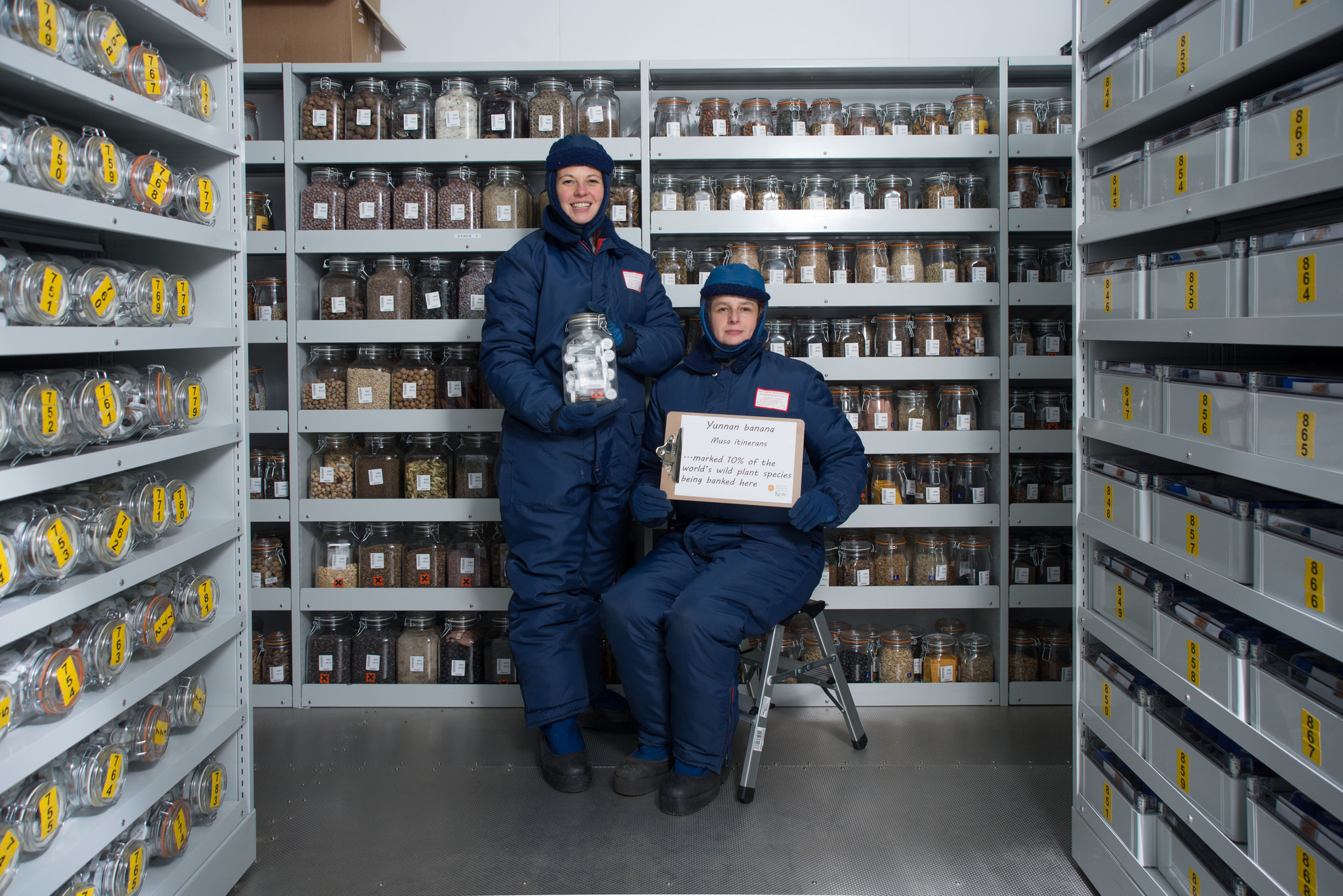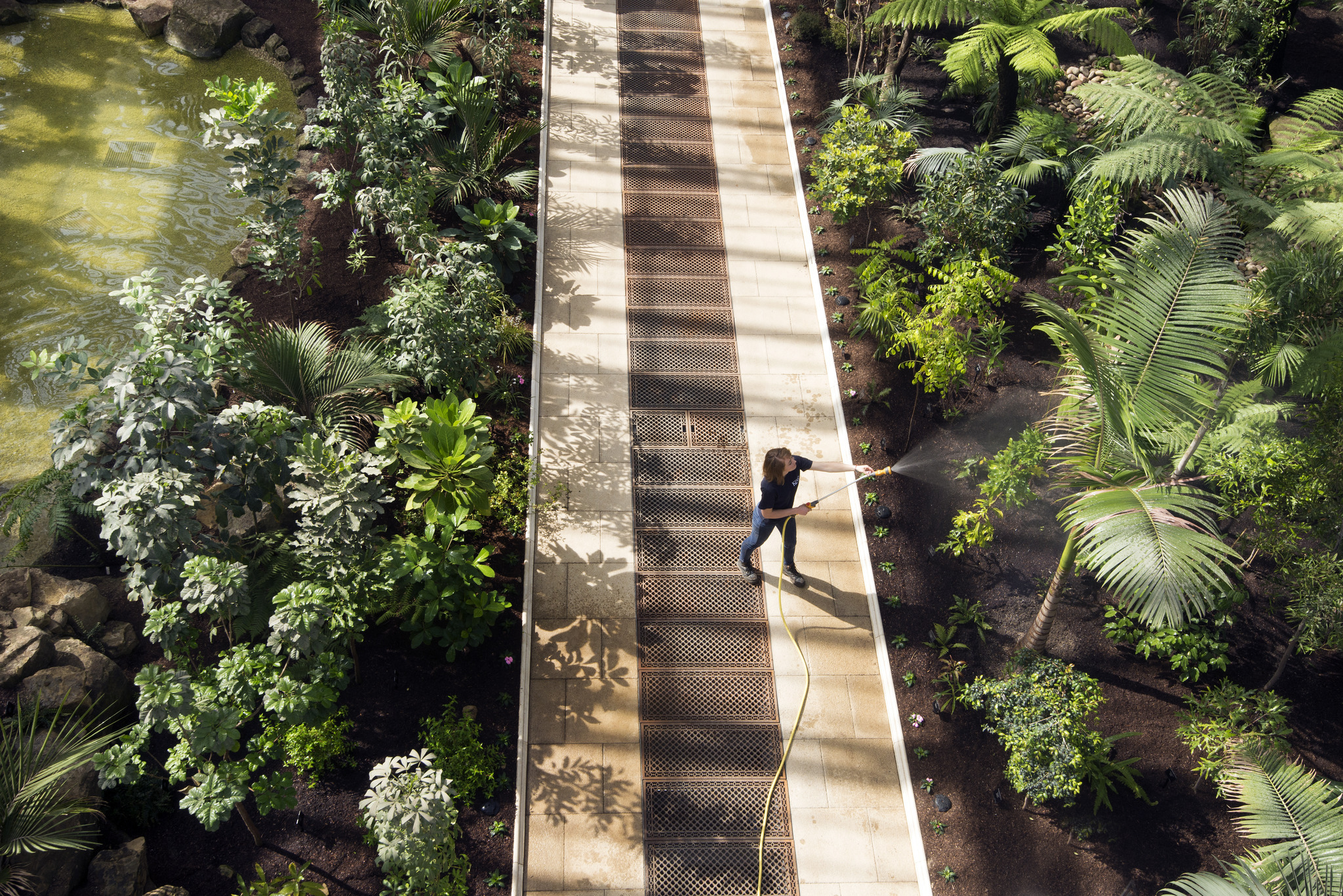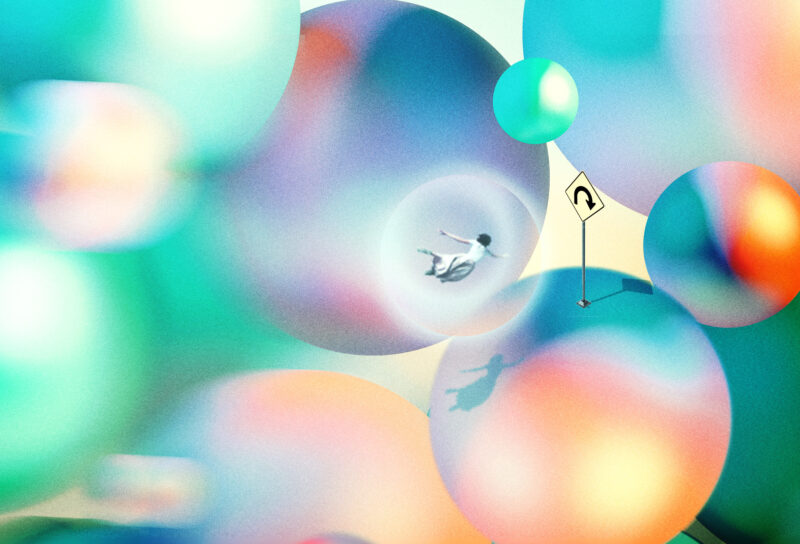Ghana’s rainy seasons used to ebb and flow in sync with the West African Monsoon system.
The major weather system is considered one of the most complex on planet Earth, moving massive amounts of water back and forth across the equator and strategically depositing it throughout Sub-Saharan Africa. These monsoon rains are the manifestation of the Intertropical Convergence Zone (ITCZ) pulling and pushing energy away from the tropics. Variations in solar radiation, caused by Earth’s tilt — ultimately, seasons — pull the ITCZ towards whichever hemisphere is warmer at the moment, bringing with it a supply of static, moist air. Farmers count on the predictability of the system. When this certainty wavers, the consequences are dire.
“The temperatures are rising, so we have excess heat and at the same time, a reduction in the volume of rain we are getting. Or it’s raining at the wrong time, or raining too much or too little,” says Matilda Bissah, a research scientist at the Council for Scientific and Industrial Research (CSIR) Plant Genetic Resources Research Institute (PGRRI) in Ghana.
The biggest threats a Ghanaian farmer faces depends on where they live. In the north, which typically has one rainy season running from May to September, the Bagré earthfill dam in Burkina Faso has tamed the natural rhythms of the Nakanbé river, the headstream of Ghana’s main waterway. Paired with too much rain, the opened dam floods fields in northern Ghana, drowning precious crops of cassava and cowpeas. Too little, and the seedlings shrivel.
Along the nation’s southern coast, the rising sea is spilling into fields. Crops are exposed to more salt than they’re adapted to, a process called salinization. Everywhere, the growing season is becoming shorter.
Historically, the nutrient deficiencies that have impacted the Ghanaian people were not linked to climate change. “But with climate change, with loss of crops and our inability to farm as we used to, the issue is getting worse,” says Bissah.
These concerns are not unique to Ghana. With increasingly drastic changes to climate everywhere, the people tasked with supplying a steady stream of food to the world are finding it more difficult to do. The clock is ticking for solutions — while our food supply is becoming evermore insecure, the global population has just surpassed 8 billion human beings.
Engineering plants and animals to work in our favor is something humans have done since the Neolithic Revolution, when Homo sapiens began to settle in communities and grow their food, rather than hunt and wildcraft.
For the past 10,000 years, our ancestors have engineered crops and tailored animals into reliable sources of food, changing their genomes in the process. These changes filtered out the genes we weren’t paying attention to, tiny pieces of genetic material that made certain plants better suited for salty environments, or hot weather, or allowed them to thrive with very little water. Now, in the face of climate change, scientists are grappling with a new challenge: how do we get these lost genes back in order to secure a reliable food system for the future?
Reviving What Was Lost
The most diverse place on Earth, genetically speaking, sits less than an hour and a half drive from London.
There, in the English countryside, are six domed buildings made from steel, concrete, and glass. They’re flood-, bomb-, and radiation-proof and each is kept at precisely -20°C.
The Kew Gardens Millennium Seed Bank houses over 2.4 billion individual seeds. Together, they account for approximately 16% of the flora on Earth whose seeds can be preserved in frozen temperatures. When the project was born, its main goal was to catalog and preserve Earth’s flora at a time when 20% of plants were at risk of extinction. But the rainbow of seeds stored in the bank’s collection of glass jars are serving another purpose: lending their genetic material to cultivated crops.
Today, around 90% of the world’s calories come from just 15 species of plants. These plants, crops that were honed by humans to be beautifully colored or nutty or juicy or to neatly fit into a grocery store display case, are coddled. They’re guarded from weeds and sheltered from pests, their growing conditions carefully curated by watchful stewards, so they’ve lost all need to defend themselves against threats. And now, the main threat they’re facing is climate change.
As greenhouse gasses heat up the planet, predictable ecological rhythms have become erratic. Instead of seasonal monsoons that wash in and out, rising oceans now flood fields sporadically. Rain is no longer a given and when it does come, it’s often too much.
Our pampered crops were designed with predictable environments in mind, and the natural world is becoming more and more difficult to control. But scientists believe the genetic material locked in seeds from wild relatives of our carefully crafted crops are humanity’s best chance at creating new varieties of cultivated food that’s better suited for the unpredictable.
The crop seeds we rely on today were designed with the notion that they would receive reliable inputs of heat and water that no longer exist.
“Humans have selectively bred crops to do what we want them to do, but in doing so we’ve bred out the plants’ hardiness,” says Christopher Cockel, coordinator of the Adapting Agriculture to Climate Change project at Millennium Seed Bank. “That’s why crop wild relatives are so important, they are out there constantly adapting traits like drought tolerance.”
Cockel and Bissah are among a global network of scientists and farmers working to flush the current crop gene pool with genetic material from their ancestors, genes that were bred out generations ago. Editing new genes into cultivated plants using their wild relatives is a tedious process, even with genome sequencing technology. But it’s necessary.
“There is nowhere else to go,” says Philipp Simon, a research geneticist with the USDA Agricultural Research Service. “You tend to lose things that you aren’t paying attention to, and we bred these resistant genes out of modern-day crops, so they don’t exist there anymore.”
Fine-Tuned Into a Corner
By definition, crop genetics are a funnel. With each generation, undesired — or seemingly unimportant — genes are shed, ensuring a select few are banked in a plant’s seed and show up in its offspring. This narrowing of the gene pool takes a wild plant and creates a new plant variety, and eventually species, that meets the aesthetic and utilitarian preferences of human beings.
That’s precisely what happened to carrots.
Wild carrots didn’t leave their natural territory, the arid, mountainous terrain of modern-day Afghanistan and Kazakhstan, until around 4,000 years ago. And until the 1950s, the iconic long, slender, bright orange carrot rarely existed.
The enlarged taproots of wild carrots are usually a pale shade of yellow, nearly white. Only sometimes are they muted orange. They also come in hues of yellow, red, purple, green, black, and striped. Some are purple on the outside and orange at their core.
Their shapes and sizes are irregular, which was perfectly fine when carrots were purchased straight from the farmer. But in the 1950s, consumer habits changed, so the carrot had to follow suit.
Americans built neat rows of single family homes on the outskirts of cities. They bought electric refrigerators and filled them with vegetables purchased not from farmers, but from grocery stores.
Producers needed to grow produce that was uniform and, in the case of carrots, could lay more or less flat when packaged in cellophane bags or bunched around their green tops. The short, thick varieties looked messy and took up valuable space when being shipped. So a few of the bigger U.S.-based carrot producers started migrating the genetics of their crops to favor the long and slender. Within a couple of years, the entire industry had shifted.
Humans have selected crops for certain desirable traits since our first ancestors settled into permanent communities around 10,000 years ago, but it hasn’t always happened this fast. Breeding used to take generations of guessing and checking, of needing to grow a plant to maturation in order to determine whether or not it had a desired trait.
But as humankind began to untangle the mysteries of genetics, this process became much easier to streamline.
In the early part of the 20th century, people began to understand some of the basic laws of genetics. This allowed plant geneticists and seed companies to expedite the breeding process at the same time as engineering feats were making it easier to control the natural environment.
With the help of finely-tuned systems that provided reliable inputs like water and fertilizer, crop designers could prioritize output, uniformity, and aesthetics, which inadvertently bred out nutrition, diversity, and resilience.
“Now we can no longer manage the environment like we once could because the environment is no longer predictable nor manageable. We again need to design new crop varieties,” says Susan McCouch, a professor in the School of Integrative Plant Science, Plant Breeding and Genetics Section at Cornell University.
But this time, we’ll need to work in the opposite direction. We’ll need to undo the genetic bottleneck we’ve created.
“The narrowing of the genetic pool in the last 100 years is probably what we are most alarmed about,” says McCouch. “But I think we are at a very major turning point. It is reversible. It’s not that the genetic diversity we need is gone, we just haven’t invested in diversification.”

A Complex Predicament
If we follow along the path we’re on, experts expect Earth’s temperature to rise by an additional 4°C during the 21st century. That’s on top of the 1.1°C that greenhouse gasses heated Earth between 1900 and 2020.
Jonas Jägermeyr is a climate change scientist and crop modeler at the NASA Goddard Institute for Space Studies in New York. Late last year, he and his colleagues published a paper outlining their latest projections for how global climatic shifts caused by this massive heating will affect agriculture. The picture was worse than previous research had predicted for maize, soybean, and rice, mostly due to warming temperatures. And although the warming bode well for wheat, an important piece of the puzzle was missing.
As the climate warms, certain regions of the world, namely those along the equator and places that are already hot, will find it harder to grow the crops they’ve been able to until now. Other regions, including Canada and Northern Europe, will likely have longer growing seasons that are conducive to new types of crops. It’s a delicate balancing act.
The bigger a crop gets, the more food it yields. But it comes at a cost. Each bite is less nutritious than it would be if the plant had been harvested when it was smaller. So simply migrating existing crops north and forgoing growing food in more southern regions will not meet global demand for nutrition.
“There are a lot of pressures that need to be solved at the same time which makes it complicated,” he says. A warming planet and a growing human population are just two. There’s also the case of irregular weather.
The current agricultural system is precariously invested in the notion that weather patterns are predictable. According to Jägermeyr, data regarding average temperatures often masks reality.
On average, an abnormally cold year will equalize an abnormally hot one, but the nuance of these drastic shifts is hidden, making it appear as though noticeable shifts in climate aren’t happening at all. Abnormal changes in temperature and moisture can destroy crops. Heatwaves early in the season can make plants skip ahead in their life cycles, putting out seed too soon, long before it’s best to harvest. Their delicate young leaves can also crisp and burn under the scorching heat. Too much or too little water can drown or zap the seeds before they even sprout. The crop seeds we rely on today were designed with the notion that they would receive reliable inputs of heat and water that no longer exist.
“As climate change continues, fluctuation between years will increase and these fluctuations create instability. That’s bad for a system,” says Jägermeyr.
But the future is not set in stone.
“These predictions are in the context of a non-adapted system, but there is a lot to do to adapt,” says Jägermeyr.
Feeding the Future
In 2011, a global organization called Crop Trust sought out the Millennium Seed Bank for a decade-long project. In partnership with farmers and scientists in 25 countries, the Crop Trust’s Crop Wild Relatives project set out to collect the wild cousins of some of the most important plants we eat.
At the time, these often scraggly, overlooked plants were poorly documented and their genetic material was rarely available to researchers. They were also disappearing. Deforestation, urbanization, and agriculture took over the natural ecosystems where wild plants grow, adapt, and drop seeds so new seedlings can do it all over again.
The end goal was simple: plant breeders need new genetic material to breed new plants, and this is where they could get it.
On four continents, seed collectors trekked through humid jungles, desert sand, and every ecosystem in between in search of wild seeds. Some would be frozen; others, the seeds of tropical plants, would be preserved as living species since a deep freeze would render them unusable.
A portion of seeds collected from each of the 29 target species were sent to the Millennium Seed Bank to be preserved or sent to researchers who specialized in the variety. The rest were stored in seed banks in the country from which they were collected so farmers and geneticists in those nations would have access to the resource. In total, the project produced nearly 5,000 wild seed collections.
They sent banana seeds to Belgium, the unassuming location of the largest collection of banana genetics in the world. Rice went to the International Rice Research Institute in the Philippines, where researchers are currently working to identify resistance genes that could make existing rice crops — the main food source for more than half the world’s population — better suited for the future.
Carrot seeds were shipped to researchers at the USDA, including Simon.
Although cultivated carrots aren’t at risk of dying out yet, Simon cautions the time to act is now. In California, where most carrots in the U.S. are grown, water for irrigation is not just scarce, it’s often non-existent.
“The stressors the California carrots are facing are spreading and if we don’t pay attention now, the crop just won’t be in the market anymore. None of the seeds will grow adequately enough to make for an economically viable crop and that’s what our farmers need to have,” he says.
In Ghana, Bissah and her team are the stewards of a collection of tropical plants and crop wild relatives that cannot be frozen. Instead, their genetic code is stored in germ plasm, living plants that are carefully cultivated. Like the seeds in the Millennium Seed Bank, the specimens Bissah has been collecting and caring for were originally harvested with conservation in mind. Now, they are increasingly being used to help farmers adapt their crops for a shorter, saltier, more unpredictable growing season.
As part of the Stress Tolerant Orphan Legumes (STOL) program, Bissah and her team are helping farmers determine which varieties of mung beans and other legumes are both nutritious enough and have a short enough lifecycle to replace existing crops that can no longer withstand the harsh climate. Previously, the specimens were kept in a genetic bank, but Bissah says it’s time for farmers to benefit from the work the organization has been doing. “Having those plants that can finish their life cycle earlier could help the farmers secure crops even with erratic weather patterns,” says Bissah.
A Systemic Shift
According to Glenn Stone, an environmental anthropologist and research professor at Sweet Briar College in Virginia, who specializes in the ecological, political, and cultural aspects of food and agriculture, it won’t be enough to design new seeds. The entire agricultural system needs to be reworked to accommodate a secure food system in the face of climate change.
“Modern agriculture makes its money off of inputs — developing, manufacturing, selling, and using chemical, mechanical, and genetic technologies,” he says.
For that reason, crop designers have mostly focused on developing high-yielding varieties. But in the U.S., these crops are intensely dependent on inputs like fertilizer and water, which makes them both fickle and expensive to grow.
“As we move into a world of hotter and more erratic weather, we need crops that are more stable and less input-dependent, even if their optimal productivity is less. It is not in crop designers’ interests to produce such crops,” he says. “What we need to be considering when designing new crops is the reward structure of crop designers.”
Necessity is shifting which traits crop designers covet. Producers need to know not only what their crops will look like once fully grown, but have insurance that their seedlings will be able to mature in the first place.
Seed companies are beginning to sell seeds with information about how well a particular variety can grow in saline soils — a product of sea level rise — or tolerate drought.
The process of pre-breeding — the initial effort to shuffle plant genetics and create a new variety — is tedious. It often requires plants to fully mature before a breeder can determine whether or not it carries the desired trait. Genetic sequencing is speeding the process along.
“If you wanted to start improving a tomato crop and there is a disease in your area of the country that attacks tomatoes, and let’s say there are some tomato varieties that you have grown in your garden that are more resilient, it would take several generations of cross breeding for those genes to come up,” explains Simon.
But if you already know the gene that controls resistance to that disease, you can simply examine the genome of each seedling. You can keep the ones that carry the trait without having to grow the full plants.
“We aren’t changing the genetics in the crop, but rather selecting for those that carry certain traits that we want,” says Simon. Unlike genetically modified organisms (GMOs), the data collected on pre-breeding has largely been made public and unpatented, meaning anyone who has access to the resources can do it. That sharing of information is critical.
Securing the food of the future will require a coordinated overhaul of global agriculture, but we have already taken the first steps. “As we’re looking at the question of the genes for salt, heat, and drought tolerance,” Simon says, “it’s more important than ever that we share this information.”



